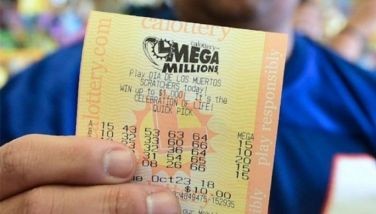The peso tops out
Since we called the bottom of the peso when it was trading at 56.50 against the US dollar in 2005 (see Peso, The Strongest Currency in Asia, Oct. 24, 2005), we have repeatedly said that the peso will continue to appreciate. In fact three years ago, we predicted that the “peso will reach 44 by end-2010, 42 by end-2011 and 40 by end-2012 (see Peso Targets 40, Aug. 23, 2010).â€
After eight long years, we see the peso turning. We expect it to depreciate against the US dollar at least for the near term. Based on technical analysis, the peso topped out at 40.45 last March 2013 and is now consolidating.
USD:PHP Rate (July 2011 – Present)

Peso at 37.50?????
Last week, one of the largest investment banks in the world reiterated their year-end of 37.50 for the peso. We in Philequity disagree. We now see the peso consolidating after years of appreciating. In fact, in a recent article (see Win-Win for the Peso, April 8, 2013) we said:
“Most foreign banks and major houses forecasted that the peso will end the year at 37 to 38. We believe they will be wrong. We in Philequity, think that there is a greater likelihood that the peso will stabilize between 41 and 42.â€
The reason why we doubt the peso will reach 37.50 or even breach 40 is because we believe the US dollar has bottomed and will continue to strengthen. We also believe that the Japanese yen has reached its top and will continue to weaken. And lastly, we believe that the peso falling below 40 would be counterproductive.
The peso cannot strengthen against the US dollar if the yen is weak and continues to depreciate against the US dollar.
Almighty dollar is back
In our article last month, we also said that what gave the peso respite is the inherent strength of the US dollar. If not for this and the BSP’s measures to stop the speculative attack on the peso, the 40 level would have easily been breached.
The chart below shows the US dollar index bottoming out in May 2011. After consolidating in the 2nd half of 2012, it started to move higher again in February 2013.

Source: Stockcharts.com
Year-to-date, the US dollar is up14.7 percent against the yen, seven percent against the British pound and 6.9 percent against the Aussie dollar. The US dollar is now 1.4 percent higher against the Philippine peso year-to-date.
Reasons for the US dollar strength
The reasons behind the resurgence of the US dollar are the following:
1) The US is ahead of the curve in terms of QE. In previous articles, we explained that the effect of QE is similar to direct currency devaluation (see Currency Wars, Oct. 11, 2010 and Beggar Thy Neighbor, May 20, 2013). Initially, this is what happened to the dollar. It weakened when the US Fed led by Ben Bernanke initiated the QE following the 2008 Subprime Mortgage Crisis. Today, however, there is resurgence in the dollar as the US economy slowly expands while Europe and Japan are still struggling to recover from recession. So while the US seems to be at the tail end of its QE program, Japan and EU appear to be just starting.
2) ECB cuts interest rates for the first time in 10 months. With the US Fed leading the way, central banks around the world embarked on their own monetary easing programs (see The Great Global Monetary Easing, Oct. 22, 2012). In EU, an extended weak economy and low inflation prompted the European Central Bank to cut rates last May 2 to a record low 0.5 percent. He also left the door open for further rate cuts.
3) Japan is embarking on its own QE program to end deflation and stimulate its economy. Under Prime Minister Abe and BOJ Governor Kuroda, Japan is targeting a two-percent inflation rate by doubling its monetary base by end-2014 (see Out of the Sandtrap, April 15, 2013).
4) Other central banks have also started cutting rates. Following the easing moves by the Fed, BOJ and ECB, other central banks around the world are cutting their respective policy rates. Several central banks, including Australia, South Korea, India, Sri Lanka, Vietnam, Israel, Kenya, Denmark, Poland, Hungary, Belarus, Turkey, Serbia, along with the ECB, have cut policy rates over the past month alone.
5) US economy expands 2.5 percent in 1st quarter of 2013 according to advanced estimate released by the Bureau of Economic Analysis. While US growth is still low by historical standards, it is growing faster than other countries including Mexico, Japan and those in the EU. Compared with China whose growth trajectory is going down, US growth is accelerating.
6) Low inflation is benefitting the US dollar. With low inflation and low commodity prices, the currencies of commodity countries and producers of precious metals (such as Australia, Canada, Russia and Brazil) have weakened against the US dollar.
7) US stocks are best performing in the developed world which attracts portfolio inflows. A lot of funds are shifting from to the US because of the higher returns and the market trading at new highs. Although the US economy has not yet fully recovered, investors consider it the best in a bad neighbourhood.
8) Shale oil fracking augers well for the dollar. It is changing the supply-demand dynamics. With this new technology, the US which is the biggest oil importer in the world is expected to be independent and self-sufficient by 2020. Long-term, oil price volatility is expected to lessen which is bullish for the stock market and the US dollar.
9) US fiscal deficit is improving. The US Congressional Budget Office is now projecting 2013 deficit to be equivalent to four percent of GDP, less than half its 2009 level, and will drop to 2.1 percent by 2015. US sequestration or budget cuts that began on March 1, 2013 as part of the austerity measures saves around $85.4 billion per month.
10) US Trade deficit is shrinking. Overall US trade deficit dropped 11 percent in the March 2013. Imported crude oil dropped to its lowest level in 17 years while deficit with China shrank 23.6 percent.
11) US manufacturing experiencing a renaissance. Still slightly below historical average, manufacturing capacity utilization has rebounded sharply from 64 percent during the height of the 2008 Subprime Mortgage Crisis to the current 76 percent.
Gold is losing its lustre. Because the global stock market is performing well and inflation is low, gold is losing its attraction as safe-haven which benefits the US dollar. Gold has lost 18 percent of its value year-to-date while the S&P 500 has risen 13 percent.
Abenomics = weak yen
Amid the volatility in the bond and stock markets last week, the BOJ is standing pat on monetary policy. Last Wednesday, the bank’s board voted unanimously to its strategy of expanding monetary base by ¥60 trillion to ¥70 trillion per year, through purchases of bonds, commercial papers, REITS, ETFs, and other assets. It is also targeting two percent inflation in by end-2014. So far, the yen has lost 14.7 percent against the US dollar this year and 23 percent since October 2012.
Peso stabilizing is a blessing
Most foreign banks and major houses are calling for the peso to reach 37 to 38 this year. But with the dollar strengthening and the yen weakening, how can the peso strengthen against the US dollar and the Japanese yen both at the same time? If the yen is weakening, we believe that the peso should also weaken with the yen.
As we have mentioned in previous articles, our preferred scenario is for the peso to hold above 40 and to trade between 41 and 42. We believe that a slightly weaker (but more stable) peso rather than a too strong peso is a blessing to our economy.
We maintain our peso target of 41 to 42 for 2013. If the US dollar continues to strengthen and the yen weakens further, we see the peso breaking 42 and consolidating between 42 and 42.50 further out.
For further stock market research and to view our previous articles, please visit our online trading platform at www.wealthsec.com or call 634-5038. Our archived articles can also be viewed at www.philequity.net.
- Latest
- Trending




























